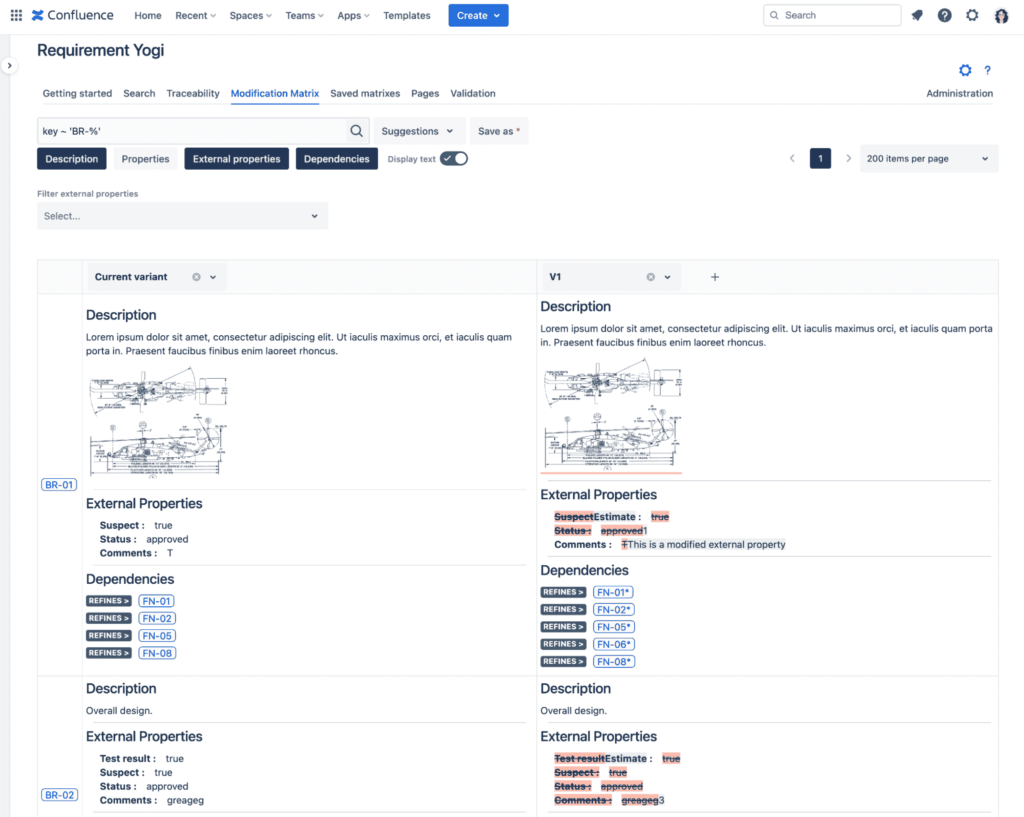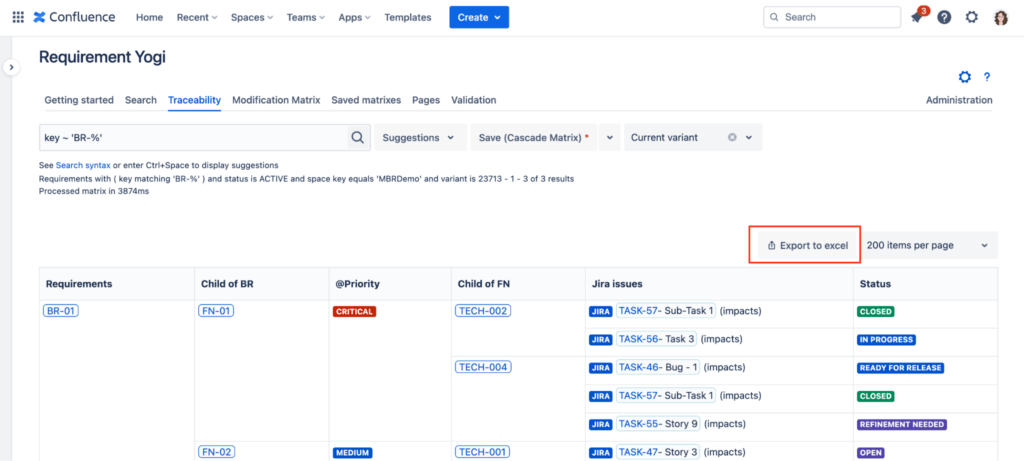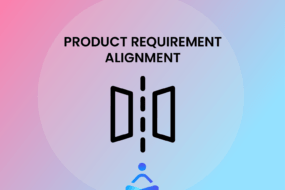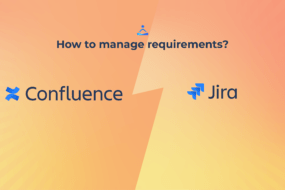
When you’re managing requirements, there are always lots of moving pieces to keep track of, and overlooking one could derail your entire project. Failure to meet compliance standards, costly rework, scope creep, and miscommunications are often the result of improper requirements tracking.
To effectively ensure quality, control costs, manage changes, and improve stakeholder visibility, a requirements tracking system is key. For agile teams using Atlassian software, the best place to track requirements is where the teams work, in Jira and Confluence.
Many product managers attempt to manage requirements directly in Jira rather than in Confluence. It seems like a natural solution since that’s where the team’s tasks are, but with hundreds or even thousands of stories in Jira, it’s difficult to extract the data for reporting. There’s also the risk that users will merge or edit the story information, so vital details may be lost.
So what’s the best way for Jira and Confluence users to keep track of requirements? We recommend writing them in Confluence and creating a traceability matrix. Read on to learn some best practices for how to do this.
Document Your Requirements in Confluence with Links to Relevant Jira Issues
To get started with managing your requirements, it’s best to put them in Confluence if you’re not already doing so. Confluence provides templates like this for writing requirements that also allow you to include links to Jira issues. That way, Confluence is your base so all the requirements are in one place, and you know which issues are connected to them and see their status.

Another benefit of using Confluence for your requirements is having a permanent record for reference. As teams and projects change, it’s easy for Jira issues to get lost. A new team member may see a Jira issue in the backlog and delete it as old or irrelevant. If all the requirements are listed in Confluence, anyone can look back and see the big picture.
Create a Traceability Matrix
Once you’ve documented all your requirements in Confluence, a traceability matrix visualizes project hierarchies and status to help you stay on top of things and keep your reporting up-to-date. It’s essential to have a record of the project from start to finish, from the goals and concepts it originated from, across changes during the development process, and finally to the end product.

You can create a limited table for basic projects, but it’s best to use requirements tracking software to capture and share all the details.
Businesses working with smaller projects may track requirements using a simple table in Confluence. This includes just two columns; one for high-level requirements and another for the related Jira issues. While it does show the status of related issues, this solution is too basic for those managing complex requirements.
Businesses with lengthy documentation, multiple projects and versions, and strict compliance standards benefit from leveraging an app to ensure requirements are managed properly and efficiently. For example, with Requirement Yogi, you can automatically transform the requirements you’ve written in Confluence into a customizable traceability matrix that reflects any data you want to report on.
Below is an example of a matrix to track the progress of a project based on dependencies, priority, and the status of the Jira issues related to it.

How to Use a Traceability Matrix to Benefit Your Business
Let’s look at just a few of the ways you can use the traceability matrix to benefit your business.
Manage Dependencies
A major reason for project delays is failing to recognize dependencies. For example, if a certain technical requirement is blocking a functional requirement, work on the functional requirement may come to a halt. Reaching key business goals for the overall business requirements also depends on all the lower-level requirements being attained in time.
Requirement Yogi’s traceability matrix allows you to set custom columns for what you want to track. For instance, the Requirement column has the high-level requirements. Then, the Child of… columns show dependent functional and technical requirements. In the Jira issues column, you can display all linked Jira issues and view their status.

That way, managers are aware of the progress and can address any issues before they become serious blockers.
View and Track Version History
Working with multiple versions often causes confusion. You may want to know what changes have been made and which are still pending. Or perhaps there’s a bug and you need to check the previous version to figure out what went wrong. That’s where the modification matrix (known as the Diff feature in the Data Center version*) comes in handy.

With this feature, you can view the current version of the requirements next to a past version and track whether any aspect has changed over time. This report can be saved as a macro and inserted on a page where you want to share it.
*Learn more about the modification matrix here.
Generate Reports to Share with Stakeholders
Stakeholders at all levels of the project’s development need visibility into progress, but often, not all of them are working in Jira. Providing an overview of requirement progress in Excel or pdf format keeps partners or business managers not directly involved in technical tasks informed.

When tracking your requirements in Requirement Yogi, all you need to do to format a traceability matrix for external stakeholders is export it. That way, you can keep everyone up to date with regular progress reports.
Ready to Start Tracking Your Requirements in Confluence?
It’s a challenge to track requirements when you’re only documenting them in Jira. Writing them in Confluence is a great start, but traceability of complex requirements is still difficult with manual processes like tables.
If you’re interested in an app to streamline your requirements tracking, consider Requirement Yogi – Requirements Management for Confluence to generate a traceability matrix. And to include even more detailed information in your traceability matrix, check out Requirement Yogi for Jira.






7 replies on “How to Set Up Requirements Tracking in Confluence and Reap the Benefits”
[…] Requirement Management 101 […]
[…] Requirement Management 101 […]
[…] Requirement Management 101 […]
[…] Requirement Management 101 […]
[…] Requirement Management 101 […]
[…] Requirement Management 101 […]
[…] Requirement Management 101 […]
Comments are closed.